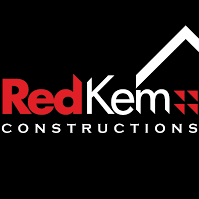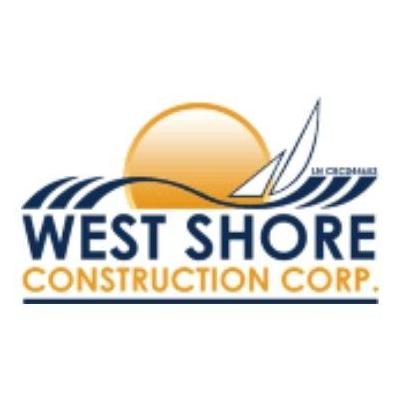How Is AI Transforming the Global Forklift Market?
Global Forklift Market Trends 2025–2033: Growth Drivers, Innovations & Future Outlook
Global Forklift Market Overview
Market Size & Forecast
The Global Forklift Market is anticipated to grow significantly from 2025 to 2033, driven by the rising demand for efficient material handling solutions across diverse industries. By 2025, the market is projected to reach a value of around USD 85.9 Billion. Looking ahead to 2033, it is expected to expand further to about USD 137.0 Billion. This represents an annual growth rate of 6.2% over the ten years.
If you’re a logistics manager, warehouse operator, or investor keeping a close eye on industrial equipment, understanding the Global Forklift Market is essential. Forklifts may appear as simple workhorses in warehouses, but in 2025 they stand at the intersection of automation, sustainability, and digital transformation.
Request Sample PDF here:
https://m2squareconsultancy.com/request-sample/global-forklift-market
Having worked on supply chain automation projects for over a decade, I’ve personally seen forklifts evolve from diesel-powered machines to electric fleets and even AI-driven autonomous models. This shift is not just technological; it’s reshaping how global logistics and e-commerce operations function.
In this blog, we’ll explore the current size of the global forklift market, the key drivers influencing growth, segmentation insights, competitive dynamics, challenges, and the road ahead through 2033.
Importance in Supply Chains
Forklifts are indispensable in:
Warehousing & retail distribution centers
E-commerce fulfillment hubs
Construction & infrastructure projects
Automotive & heavy manufacturing plants
Key Growth Drivers
E-commerce Expansion
The boom in online retail is one of the most powerful growth engines. Global e-commerce logistics spending is projected to hit USD 1.5 trillion by 2033 (McKinsey). More warehouses mean more forklifts from pallet trucks to high-reach vehicles—to handle rising order volumes.
Shift to Electric & Sustainable Forklifts
Sustainability is reshaping industrial equipment. Electric forklifts now account for more than 65% of the market in Europe
Zero emissions
Lower total cost of ownership
Quieter operation indoors
For example, Toyota Material Handling’s lithium-ion electric models are reducing warehouse emissions significantly.
Automation & IoT Integration
Forklifts are becoming smarter with autonomous navigation, telematics, and AI-enabled safety systems. Autonomous Guided Vehicles (AGVs) are being deployed in large logistics centers, enhancing efficiency and reducing labor costs (Logistics Management).
Market Segmentation Insights
By Product Type
Counterbalance Forklifts – most widely used in logistics hubs
Reach Trucks – optimized for high-rack warehouses
Pallet Trucks – essential for e-commerce fulfillment
By Fuel Type
Electric Forklifts – rapid adoption due to sustainability goals
Diesel Forklifts – still dominant in outdoor, heavy-load applications
LPG Forklifts – a transitional fuel with lower emissions
By Region
Asia-Pacific: China and India drive the largest market share with expanding manufacturing bases.
North America: Strong adoption of warehouse automation in the U.S. and Canada.
Europe: Strict emissions regulations are accelerating the switch to electric fleets.
Emerging Markets: Southeast Asia and Africa present untapped opportunities as industrialization accelerates
Competitive Landscape
The forklift market is highly consolidated, with global leaders including:
Toyota Industries Corporation
KION Group
Jungheinrich AG
Mitsubishi Logisnext
Hyster-Yale Materials Handling
These companies are investing heavily in R&D, fleet electrification, and telematics integration. Strategic acquisitions and collaborations such as KION’s investment in digital fleet management solutions are shaping competitive advantages
Challenges & Opportunities
Supply Chain Disruptions
Global raw material shortages and shipping delays have increased forklift lead times by up to 20% in 2024 (PwC).
Safety & Workforce Training
Forklifts remain a top cause of workplace injuries. OSHA reports nearly 85 fatal accidents and 34,000 serious injuries annually. This has led to a growing demand for operator training programs and AI-based safety features.
Emerging Market Potential
Africa and Southeast Asia offer growth opportunities due to rising construction projects and industrialization. Local distributors are expanding networks to meet demand.
Future Outlook
Looking toward 2033, the forklift industry will be shaped by three transformative forces:
Autonomous Forklifts – AI-powered vehicles capable of self-navigation.
Connected Fleet Management – IoT integration for real-time monitoring.
Sustainable Warehousing – Electric and hydrogen-powered forklifts replacing fossil-fuel machines.
Frequently Asked Questions
What is the Global Forklift Market?
What are the types of forklifts in the market?
What factors are driving the growth of the Global Forklift Market?
Who are the leading players in the Global Forklift Market?
Which regions dominate the Global Forklift Market?
What challenges does the Global Forklift Market face?
What is the future outlook of the Global Forklift Market?
How can businesses benefit from investing in forklifts?
What trends are shaping the Global Forklift Market?
How is technology impacting the Global Forklift Market?
Conclusion
Forklifts are no longer just industrial tools; they’re becoming strategic assets in modern supply chains. From sustainability-driven electrification to AI-driven automation, the global forklift market is on a path of significant transformation.
Explore New Related Reports :
Electric supercharger market
Global Biochar Market
Aircraft Paint Market
Satellite Data Services Market
Artificial Intelligence Market
eSIM Market
Contact Us
Email: sales@m2squareconsultancy.com
Phone (IN): +91 80978 74280
Phone (US): +1 929 447 0100
How Is AI Transforming the Global Forklift Market?
Global Forklift Market Trends 2025–2033: Growth Drivers, Innovations & Future Outlook
Global Forklift Market Overview
Market Size & Forecast
The Global Forklift Market is anticipated to grow significantly from 2025 to 2033, driven by the rising demand for efficient material handling solutions across diverse industries. By 2025, the market is projected to reach a value of around USD 85.9 Billion. Looking ahead to 2033, it is expected to expand further to about USD 137.0 Billion. This represents an annual growth rate of 6.2% over the ten years.
If you’re a logistics manager, warehouse operator, or investor keeping a close eye on industrial equipment, understanding the Global Forklift Market is essential. Forklifts may appear as simple workhorses in warehouses, but in 2025 they stand at the intersection of automation, sustainability, and digital transformation.
Request Sample PDF here:https://m2squareconsultancy.com/request-sample/global-forklift-market
Having worked on supply chain automation projects for over a decade, I’ve personally seen forklifts evolve from diesel-powered machines to electric fleets and even AI-driven autonomous models. This shift is not just technological; it’s reshaping how global logistics and e-commerce operations function.
In this blog, we’ll explore the current size of the global forklift market, the key drivers influencing growth, segmentation insights, competitive dynamics, challenges, and the road ahead through 2033.
Importance in Supply Chains
Forklifts are indispensable in:
Warehousing & retail distribution centers
E-commerce fulfillment hubs
Construction & infrastructure projects
Automotive & heavy manufacturing plants
Key Growth Drivers
E-commerce Expansion
The boom in online retail is one of the most powerful growth engines. Global e-commerce logistics spending is projected to hit USD 1.5 trillion by 2033 (McKinsey). More warehouses mean more forklifts from pallet trucks to high-reach vehicles—to handle rising order volumes.
Shift to Electric & Sustainable Forklifts
Sustainability is reshaping industrial equipment. Electric forklifts now account for more than 65% of the market in Europe
Zero emissions
Lower total cost of ownership
Quieter operation indoors
For example, Toyota Material Handling’s lithium-ion electric models are reducing warehouse emissions significantly.
Automation & IoT Integration
Forklifts are becoming smarter with autonomous navigation, telematics, and AI-enabled safety systems. Autonomous Guided Vehicles (AGVs) are being deployed in large logistics centers, enhancing efficiency and reducing labor costs (Logistics Management).
Market Segmentation Insights
By Product Type
Counterbalance Forklifts – most widely used in logistics hubs
Reach Trucks – optimized for high-rack warehouses
Pallet Trucks – essential for e-commerce fulfillment
By Fuel Type
Electric Forklifts – rapid adoption due to sustainability goals
Diesel Forklifts – still dominant in outdoor, heavy-load applications
LPG Forklifts – a transitional fuel with lower emissions
By Region
Asia-Pacific: China and India drive the largest market share with expanding manufacturing bases.
North America: Strong adoption of warehouse automation in the U.S. and Canada.
Europe: Strict emissions regulations are accelerating the switch to electric fleets.
Emerging Markets: Southeast Asia and Africa present untapped opportunities as industrialization accelerates
Competitive Landscape
The forklift market is highly consolidated, with global leaders including:
Toyota Industries Corporation
KION Group
Jungheinrich AG
Mitsubishi Logisnext
Hyster-Yale Materials Handling
These companies are investing heavily in R&D, fleet electrification, and telematics integration. Strategic acquisitions and collaborations such as KION’s investment in digital fleet management solutions are shaping competitive advantages
Challenges & Opportunities
Supply Chain Disruptions
Global raw material shortages and shipping delays have increased forklift lead times by up to 20% in 2024 (PwC).
Safety & Workforce Training
Forklifts remain a top cause of workplace injuries. OSHA reports nearly 85 fatal accidents and 34,000 serious injuries annually. This has led to a growing demand for operator training programs and AI-based safety features.
Emerging Market Potential
Africa and Southeast Asia offer growth opportunities due to rising construction projects and industrialization. Local distributors are expanding networks to meet demand.
Future Outlook
Looking toward 2033, the forklift industry will be shaped by three transformative forces:
Autonomous Forklifts – AI-powered vehicles capable of self-navigation.
Connected Fleet Management – IoT integration for real-time monitoring.
Sustainable Warehousing – Electric and hydrogen-powered forklifts replacing fossil-fuel machines.
Frequently Asked Questions
What is the Global Forklift Market?
What are the types of forklifts in the market?
What factors are driving the growth of the Global Forklift Market?
Who are the leading players in the Global Forklift Market?
Which regions dominate the Global Forklift Market?
What challenges does the Global Forklift Market face?
What is the future outlook of the Global Forklift Market?
How can businesses benefit from investing in forklifts?
What trends are shaping the Global Forklift Market?
How is technology impacting the Global Forklift Market?
Conclusion
Forklifts are no longer just industrial tools; they’re becoming strategic assets in modern supply chains. From sustainability-driven electrification to AI-driven automation, the global forklift market is on a path of significant transformation.
Explore New Related Reports :
Electric supercharger market
Global Biochar Market
Aircraft Paint Market
Satellite Data Services Market
Artificial Intelligence Market
eSIM Market
Contact Us
Email: sales@m2squareconsultancy.com
Phone (IN): +91 80978 74280
Phone (US): +1 929 447 0100



